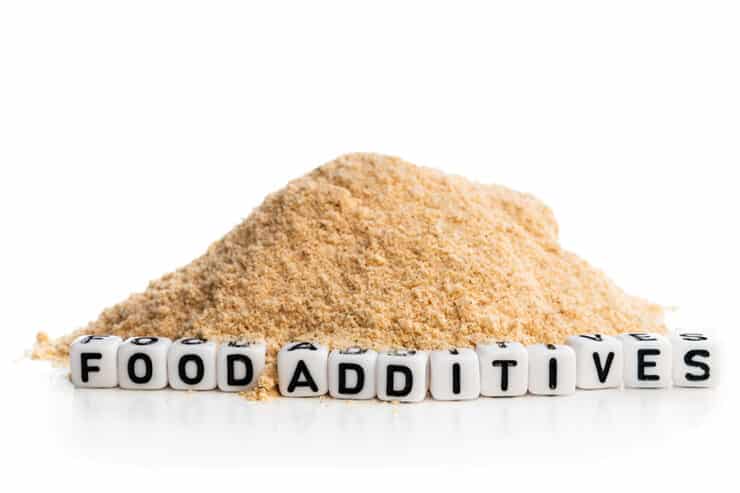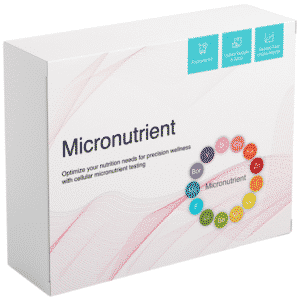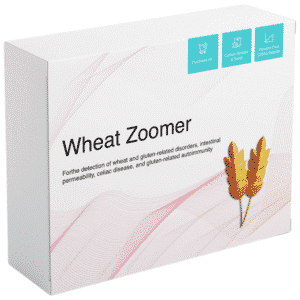Description
Food Additives: At-home test, dried blood spot collection

Vibrant Additives is an array of 57 commonly consumed food additives, and which offers very specific antibody-to-antigen recognition. This panel measures an individual’s IgG and IgA sensitivity to food additives, which can aid in differentiation of food additive sensitivity from food sensitivities.
Being able to test IgA antibodies alongside IgG antibodies provides additional information on food additives that may be causing mucosal damage. Additionally, this test is ideal for patients who might be suffering from delayed reactions to certain foods or food additives.
Using an antibody-based food additives test can help prioritize the necessary foods to eliminate, avoid, or rotate and create a customized diet plan around the patient’s specific needs.
Food additives can be added to a food at any point in the process of growth to consumption, and many are considered generally recognized as safe (GRAS) by the FDA.
Why Test Food Additives?
Food Additives testing can be very useful to help prioritize an elimination or rotation diet. Usually removing foods containing additives that the body has produced antibodies to will alleviate symptoms, because the source of inflammation is removed.
Symptoms that appear when consuming a food with multiple ingredients can be due to a sensitivity to the food, or to the ingredients or additives in the food.
Food Additive testing can be very useful to help determine the true cause of the sensitivity and prioritize an elimination or rotation diet to reduce symptoms related to food additive sensitivities
The ideal time course for elimination is not established. Consider magnitude of antibody response, ½ life of antibodies, patient’s current dietary intake, level of motivation, status of mucosal integrity, and remission and/or progression of symptoms.
Food Additives Sample Report
Markers Measured
Food Additives Blood Test markers measured:
Food Dyes and Pigments
- Acid Blue #3 (Patent Blue V)
- Acid Red #14 (Carmoisine)
- Annatto
- Beta-Carotene
- Blue #1 (Brilliant Blue)
- Blue #2 (Indigo Carmine)
- Brilliant Black
- Cochineal Extract
- Green #3 (Fast Green)
- Red #2 (Amaranth Red)
- Red #3 (Erythrosine)
- Red #4 (Carmine)
- Red #40 (Allura Red)
- Yellow #5 (Tartrazine)
- Yellow #6 (Sunset Yellow)
Pesticides
Sweeteners
- Acesulfame K
- Aspartame
- Erythritol
- Mannitol
- Monk fruit
- Saccharin
- Sorbitol
- Stevia
- Sucralose (Splenda)
- Xylitol
Elements
- Fluoride
- Nickel Sulfate
- Titanium dioxide
Preservatives and Antioxidants
- Benzoic Acid
- Butylated Hydroxyansiole (BHA)
- Butylated Hydroxytoluene (BHT)
- Citric Acid
- Sodium Sulfite
- Sorbic Acid
- Formaldehyde
- Sodium Benzoate
- Sodium Nitrate
Emulsifiers and Surfactants
- Lecithin (Soy)
- Lecithin (Egg yolk)
- Polysorbate 80
Flavor Enhancers
- Monosodium Glutamate (MSG)
- Ammonium Chloride
- Sodium Citrate
Gums and Thickening Agents
- Gum Arabic
- Guar Gum
- Gum Tragacanth
- Locust Bean Gum
- Mastic Gum
- Xanthan Gum
- Beta-Glucan
- Carrageenan
- Cottonseed
Fibrous Additives
- Ispaghula or Psyllium Husk
Other
Symptoms
Food Additives Sensitivity Symptoms
- Gas and bloating
- Fatigue
- Abdominal pain or cramping
- Diarrhea or constipation
- Headaches
- Brain fog
- Rashes, such as eczema
- Nausea and vomiting
- Skin itchiness and redness
- Bronchitis and asthma-like symptoms
- Musculoskeletal joint pain
- Muscle or joint stiffness and swelling
- Neurological symptoms such as tingling or numbness
About Test
About Food Additives Test
This is a dry blood spot (DBS) collection that is done at home.
You will receive a kit with full instructions. When you receive your kit please open it up and lay out the instructions and contents of your kit and get familiar with them.
You will be sent a lancet (to prick your finger with), as well as a blood specimen collection card. Simply follow the instructions to 'fill' your card with blood spots.
View detailed collection instructions with images here (PDF)
STEP 1
Before you begin, make sure you will have at least 15 minutes of uninterrupted time. First, find a clean, open space to work on. Open the DBS collection kit and lay out all of your materials on the placemat (the last page) provided.
Please wear appropriate PPE ( personal protective equipment) while collecting the specimen from the patient.
* You will be given as many Blood specimen collection cards as required by your lab order.
* All DBS cards need to be filled for testing. Failure to complete all cards will result in the test not being performed.
STEP 2
Write the name and DOB on the card. Write the date and time on the blood specimen collection card.
STEP 3
Open the alcohol wipe.
STEP 4
Wash your hands and dry them with a clean towel. Make sure the water is warm, not hot.
This is very important as it will stimulate blood flow to the hands!
STEP 5
Choose a finger to poke on your non-dominant hand. If you are left-handed, choose your right hand. If you are right-handed, choose your left hand.
STEP 6
Choose an area on the side of your finger to poke (you'll see a visual in the instructions).
STEP 7
Pick up your lancet and twist the cap off.
STEP 8
Rub your finger from base to tip.
STEP 9
Put the lancet down and wipe the tip of your finger with the alcohol wipe.
Make sure to only wipe the finger in one single swoop!
STEP 10
With your palm facing up, press the lancet to your finger until you hear a click and feel a slight pinch.
STEP 11
Wipe the first drop of blood away with a gauze pad.
STEP 12
Milk your finger from base to tip to produce more blood.
STEP 14
Let the blood drop fall from your fingertip into the collection circle.
DO NOT touch your finger to the card. Fill the circle as full as possible, but do not add a second drop of blood to a circle. If necessary, use a second lancet!
STEP 15
After filling in all of the collection card circles, use your gauze pad to wipe the blood, apply pressure and apply a bandage.
STEP 16
Please discard the bio waste, including used lancet, alcohol pads, and gauze sponge, in an appropriate Biohazard waste container.
STEP 17
Let your collection card sit for at least 2 hours to dry before sending it back to us.
Keep the collection card in a cool, dry place away from sunlight.
Do not add additional blood drops after blood spots have dried.
Blood spots will darken as they dry.
STEP 18
After the blood spots have dried for at least 2 hours, fold the collection card, place it in the biohazard bag along with the humidity indicator and silica gel packs, and seal it tight.
STEP 19
Place the biohazard bag into the bubble mailer. Wash hands to prevent contamination. Please schedule Fedex Pick up for the specimen to be picked up from your office.
The Vibrant Experience
Vibrant America is a leading science and technology company delivering life-transforming laboratory services using an integrated microarray platform that enables multiplex testing at an affordable cost.
Vibrant’s relationship with its patients and providers is special. We go out of our way to provide the value and resources our providers need to accurately interpret test results and give patients the most accurate health information.
The Most Accurate In the Industry
All tests run on Vibrant’s proprietary 3Dense microchip technology platform boast an unrivaled specificity and sensitivity – which translates to the highest standard of accuracy of results in the lab industry.
Our Lab Technology
Vibrant America is at the forefront of modern medicine. Our technology was developed out of passion for better medicine, and we believe that automation is the key to high-quality and accurate test results. Multiplexing tests on a single sample enable a fast turnaround time.
Our Mission
Dedicated to bring clinically relevant test at a rapid pace to enable affordable high-quality diagnostics to every individual.
- High-quality lab service
- Fully automated systems
- Low cost
- Fast Turn Around Time
Quality and Security
All of our laboratory testings is done in a CLIA and CAP-certified laboratory in California.
Vibrant America's Compliance Overview
FAQ
FAQ
How do I know if my blood spots are big enough?
You’ll know if you have enough blood if the blood spot fills most of the collection circle. Try your best to fill all five circles.
My blood drops fell outside of the collection circles. Is this okay?
Yes, it is fine if the blood drops don’t fit neatly into the circles, but try to get them as close as possible.
I am nervous to poke my finger. What should I do?
Most people have said that the anticipation is worse than the poke itself. It should only feel like a slight “pinch.”
I poked my finger but am not getting enough blood out. What should I do?
First, try standing up and milking your finger below your waist. You can also try shaking your hand below your waist. If that doesn’t help, you can run your fingers under warm water while milking them to stimulate blood flow.
If blood still isn’t flowing, it has probably clotted. Wipe your finger with the alcohol wipe and apply a bandage. Try again later. It may help to take a break and drink a glass of water and move around. This will help stimulate blood flow to your fingers. Then, try again. This time poke another finger or a different spot on the same finger, and then try the process again.
What medications can interfere with the Vibrant Additives test results?
As with all antibody testing, immunosuppressant and corticosteroid drugs can reduce antibody production and cause false negative results. A patient should ask their pharmacist or healthcare provider if their prescribed medications are immunosuppressant or steroid-class medications. If so, it is recommended to wait 30-60 days (immune-response is individually variable) after completing the prescription for it to clear the system and allow the normal production of antibodies. This is required for accurate antibody measuring. Do not stop these medications without instructions from your prescribing doctor. A list of immunosuppressive drugs can also be found here: https://www.drugs.com/drug-class/immunosuppressive-agents.html
Inhalers can affect test results. Wait two weeks after completion of the inhalant dosage before collecting the specimen. Do not stop these medications without instructions from your prescribing doctor.
Certain infections can interfere with test results.
For best assessment, it is important for a physician to evaluate total immunoglobulins (total IgG and total IgA) to determine a patient’s baseline immunoglobulin production and thus accuracy of a patient’s antibody response. Total IgG and total IgA are available to add to any antibody testing from Vibrant if selected upon ordering on the lab requisition form.
Does the patient need to be actively eating the additives tested (food dyes, carageenan, glyphosate, etc) to run the Vibrant Additives?
Our Vibrant Clinical Team does not recommend a specific additive challenge to a patient who is already aware they have adverse symptoms produced when eating that particular ingredient. However, with any antibody testing, if the antigen has been removed for a significant amount of time (variable amongst individuals), the body will no longer mount an IgA/IgG antibody response and will render an antibody test as a “false negative”. Such is the case with any of our antibody tests, including Additives.
Is fasting required for the Vibrant Additives test?
Fasting status will not influence antibody results and the Vibrant Additives test measures antibodies to antigens specific for the additives measured.
What is the distinction between IgG and IgA antibodies?
- A primary piece to understanding antibodies is their area of origin. IgA antibodies are produced by saliva, tears, and mucous linings in the lungs and the intestines. IgG antibodies are the most abundant in serum and are produced by almost every cell in the body. IgG antibodies can cross the placenta. These antibodies also have considerably different half-lives. IgA antibodies have a half-life of ~6 days. Elevated IgA antibodies indicate exposure 8-12 days ago. The half-life of IgG is much longer and individually variable and can indicate prolonged exposure/sensitivity.
- IgA antibodies are produced by the intestinal mucosa as a defense mechanism. If IgA antibodies are elevated to a particular protein (antigen), this can indicate an immune response to mucosal irritation or damage. Elevated IgG antibodies means that there is exposure of these foods to the bloodstream and the body is producing antibodies.
- In terms of food additive sensitivities and intestinal autoimmune disease, IgG antibodies can occur as a consequence of and can be downstream to intestinal permeability. These are likely correlated with more systemic immune responses (brain fog, fatigue, skin, migraines, etc). Vibrant Wellness does not measure IgG subclasses.
- As with all immunoglobulin testing, it is important to evaluate the patient’s baseline levels of (total) IgA and IgG. These biomarkers are included in the Vibrant Wheat Zoomer.
What is the source of Vibrant Food Additive antigens?
- The Vibrant Wellness 57 antigen Food Additives test uses FDA-approved antigen extracts only.
- Food Additive sensitivity testing should only be interpreted in conjunction with a patient’s symptoms.
How are reference ranges for the Vibrant Wellness Food Additives determined?
- Vibrant has given a numerical value to quantify the antibodies measured by chemiluminescent signal of our microchip.
- The determination of the positive cutoff is by 97.5 percentile of 192 normal healthy controls.
- If you are above 97.5 percentile, you are considered positive.
- If 5% below cutoff (92.5-97.5 percentile), it’s borderline.
- Less than 92.5 percentile, it’s negative.
What if my test shows that I have had a reaction to an additive (food dyes, pesticides, etc), but I don’t eat foods that contain that ever or often, and can’t remember the last time I have had it?
In the course of our daily lives – eating out in restaurants, buying packaged/processed foods, having dinner at someone else’s house, etc. we are constantly in contact with trace amounts of proteins from other foods.
This is especially common at a restaurant, where counters and food prep spaces might have had a host of different foods on them prior to your meal being served. You might be familiar with the terminology “this food was processed in a facility that also processes nuts, dairy, wheat…” or similar wording that is warning you that the food item might be contaminated with trace amounts of other foods that contain those additives.
It can be also that you have routinely come into contact with food that has been contaminated with other items such as food dyes, pesticides, etc.
These additives can also commonly be found in other consumable sources such as drinks, cosmetics, and personal hygiene products.
I have a known allergy, but tested negative for this food additive on Vibrant Food Additive test? How can that be?
The terms food allergy and food sensitivity are widely confused and often wrongfully used interchangeably.
A true food allergy (type I hypersensitivity or immediate reaction) is usually mediated by an IgE-specific antibody. On the Vibrant Food Additive test, we are measuring both IgG and IgA antibodies that are more indicative of a food additive sensitivity (type 2, 3, or 4 hypersensitivities or delayed reactions). For a full explanation on the difference between food immunoglobulins, please see this attached handout.








